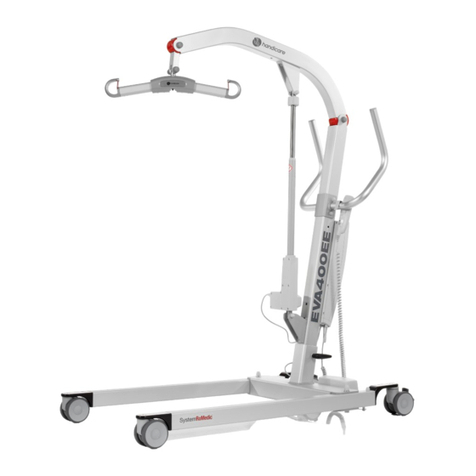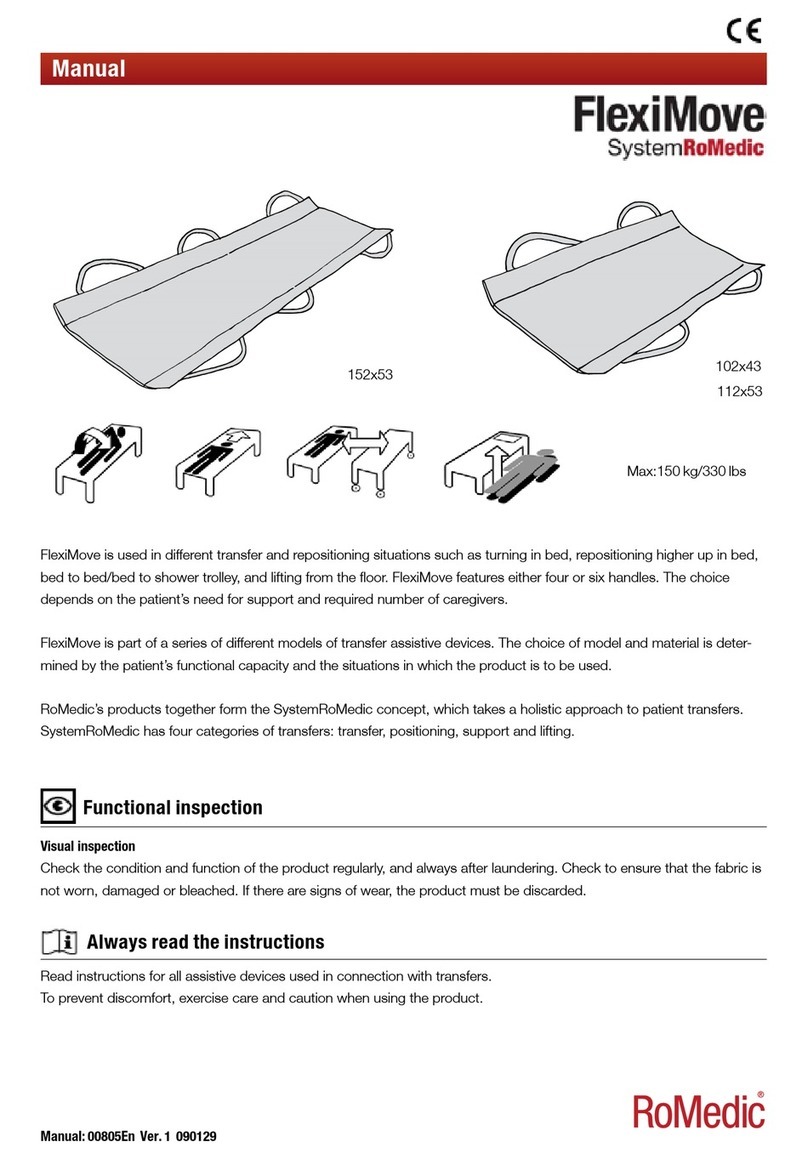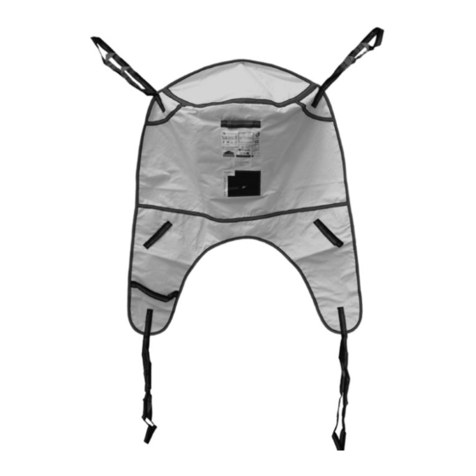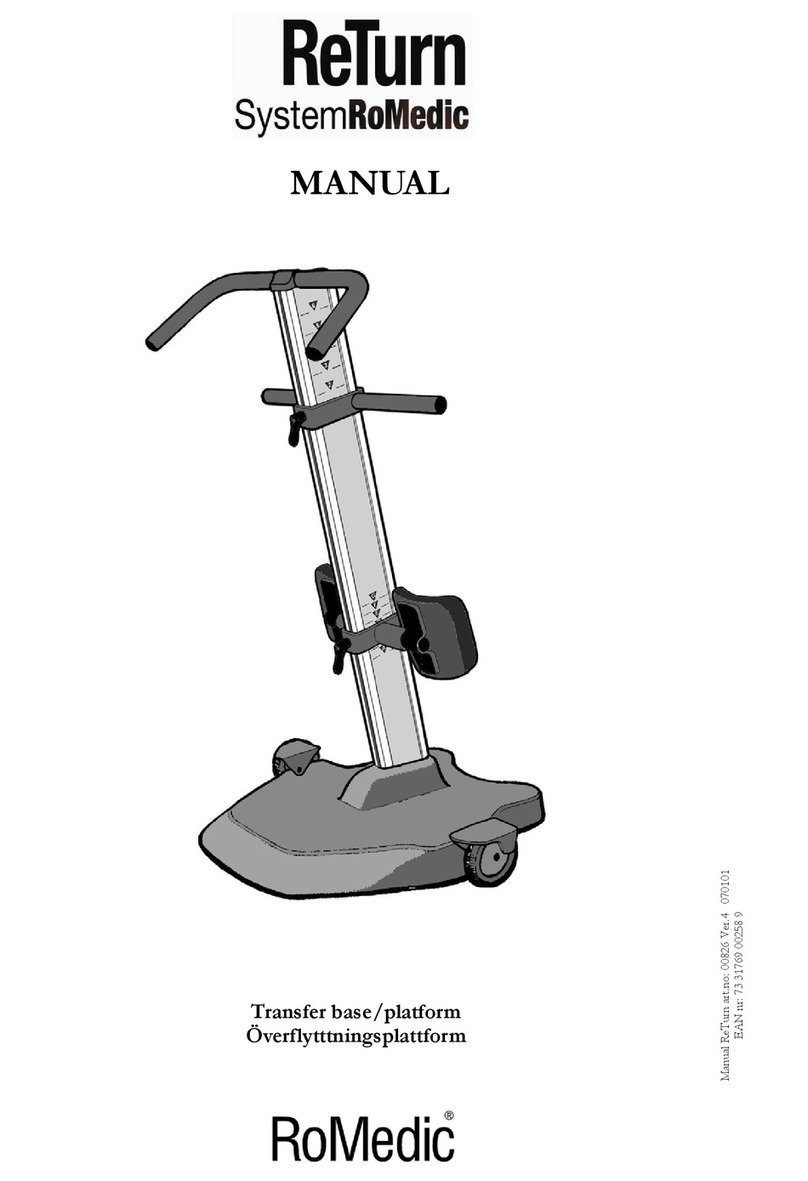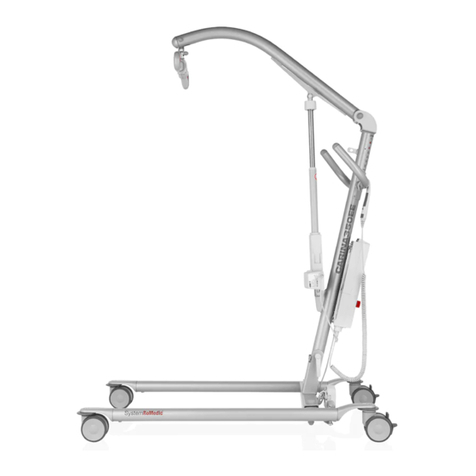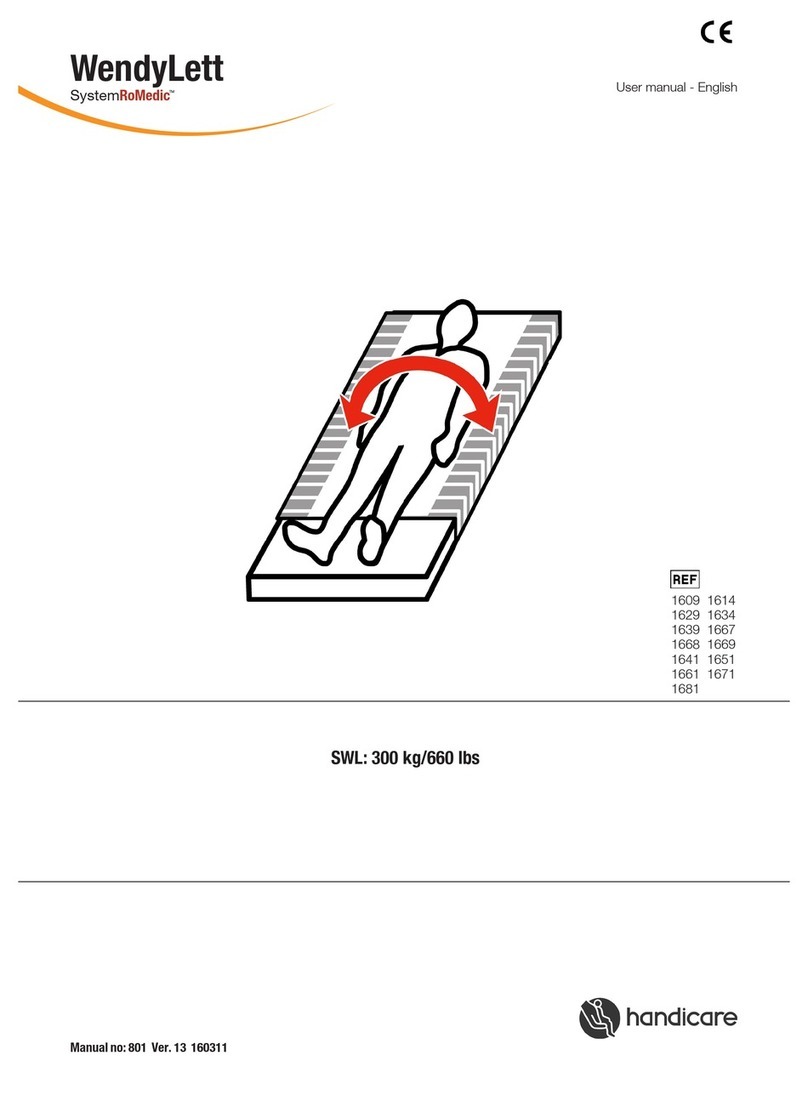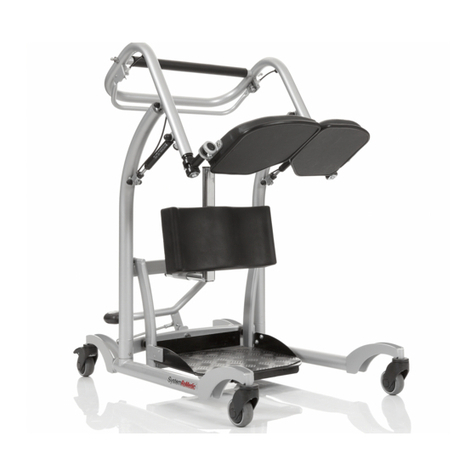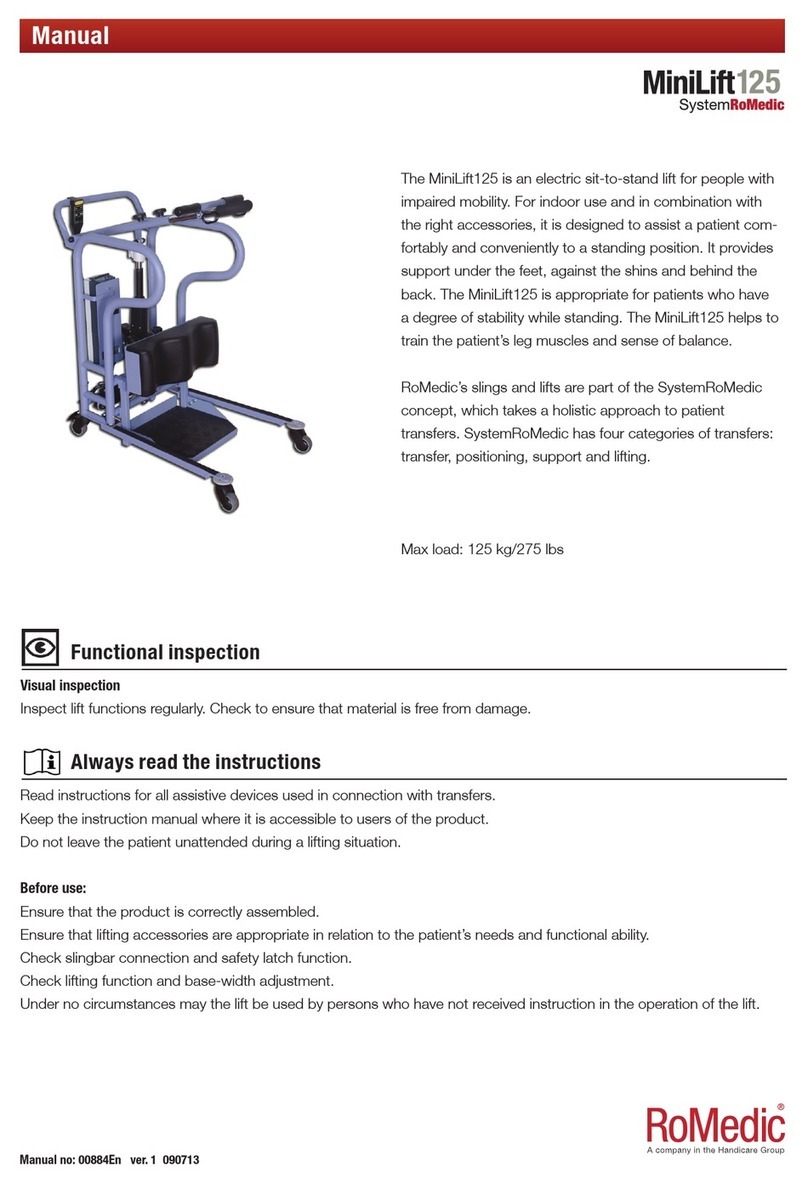
Safety information
Visual inspection
• Inspect the packaging for any damage.
• Check for correct product being delivered.
• Inspect lift functions regularly.
• Check to ensure that material is free from damage.
Before use
• Check if all the parts/components are included in the packaging.
• Check if all approved accessories are included in the package.
• Check if Product Quality Approval document is included in the packaging. Save this document for future contact
with manufacturer.
• Make certain the lift is properly assembled.
• Check lifting function and base-width adjustment.
• Check driving function in all directions.
• Check sling bar connection and safety latch function.
• Always read the user manuals for all assistive devices used during a transfer.
• Keep the user manual where it is accessible to users of the product.
• Always make sure that you have the right version of the user manual.
• The most recent editions of user manuals are available for downloading from our website,
www.directhealthcaregroup.com
• Under no circumstances may a lift with Vega be used by persons who have not received instruction in the operation
of a lift with the accessory mounted.
• It is strongly prohibited to modify the original product.
Always read the user manual
Intended use of the product
Vega is a movable and portable unit which together with approved accessories assists in lifting and/or transferring
patients in a seated or supine position from bed to chair or vice versa, as well as transferring patients short distances
indoors when needed. Vega decreases risk of injuries to caregivers in the lifting situation. To be used by caregivers who
can read and understand the instruction on how to use the lift.
Vega is intended to be used in both Home healthcare environment and Professional healthcare facility environment.
Device description
Vega is to be used for transferring persons with physical disabilities (with little or no muscular function, including loss of
voluntary movement functions) between two point for example bed and wheels chair.
Vega is to be operated by caregivers (lay persons and healthcare professionals) who have access to and the ability to
read and understand the IFU (instructions for use) of the Vega. Vega reduces the need for manual lifting of the patient,
thus making the lifting situation safer and reducing care personnel’s work related injuries.
4IFU System

